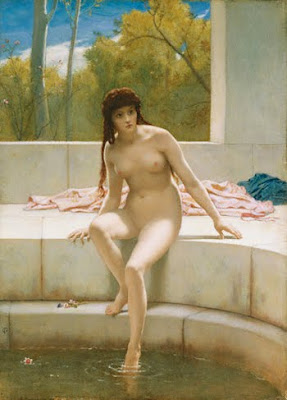 Cézanne is considered as a Post-Impressionist painter and a kind of bridge between Impressionism and modern art like Cubism. So it’s interesting how he treated here the old traditional subject, which so many artists had depicted before.
Cézanne is considered as a Post-Impressionist painter and a kind of bridge between Impressionism and modern art like Cubism. So it’s interesting how he treated here the old traditional subject, which so many artists had depicted before.There is the nude Bathsheba exposing her body to the sun or to King David, who cannot be seen. But there is the maidservant, probably as a kind of label that this is Bathsheba. Different to nearly all of his colleagues Cézanne refrains from the cheap exploitation of the nude body. He reduces Bathsheba to colour and finally to an icon.








.jpg)












